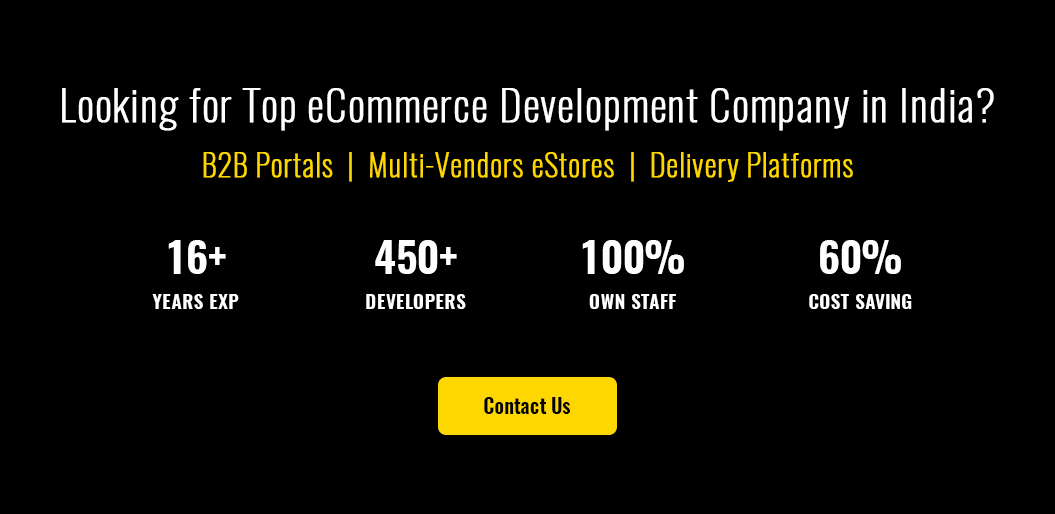Online marketplaces are getting a lot of popularity nowadays, and it is growing exponentially. When you look for any product, you may come across some successful e-commerce marketplace websites such as Amazon, Etsy, eBay, or Flipkart.
One of the best Marketplace websites, such as Amazon, has already reached the 100 billion revenue mark this year.
As per a survey, 48% of online shoppers navigate directly to a large ecommerce marketplace when they buy something online. RioRevolution conducted a detailed analysis of the impact of COVID-19 on e-commerce and found that the market for handcrafted items such as home furnishings & masks soared during the pandemic. As a result, sales increased 146% in the Etsy Marketplace. That is the power of a marketplace website.
As technology and digital transformation grow exponentially, creating a marketplace website is not an easy task. In this blog, you’ll find out how to build a marketplace website and other important information.
Let’s first understand what multi-vendor e-commerce marketplaces are?

Source: Google
An E-commerce marketplace is something where you can search for services or products from numerous vendors on the exact same platform. This basically connects sellers and buyers directly.
To stay in this highly competitive field, you have to give advanced features like detailed tracking of purchasing in real-time, e-commerce fraud deduction. To customize all new features and make your website more attractive, you should hire ecommerce website developers who can create custom websites with loads of features.
Now, let’s discuss more on Multi-vendor websites:
As the term implies, a multi-vendor marketplace or store is something in which third-party sellers sell at one place. Simplistically, it is a big store that contains various small shops that individual vendors run.
How does this work?
A multi-vendor marketplace operates effectively & efficiently with store owners and suppliers. You need to maintain direct communication, keep customers updated on the various offers, and ensure that the product is delivered on time. Here are some steps on how a multi-vendor marketplace works:
- Suppliers register on the market through a paid or even free registration.
- Once the supplier signs up and uploads their products, customers can start buying them.
- The multi-vendor marketplace store manager may charge a small fee for each transaction.
- Most payments are transferred to the store administrator and from there to the chosen seller.
- The delivery of the product is handled by the supplier himself or even by the administrator.
- Communication about defective products can be passed on to the supplier or even the store manager, who is the one who handles the seller.
If you are also interested in making a multi-vendor ecommerce website, you can hire ecommerce developers and develop multi-vendor marketplace software.
Check out some features of Multi-Vendor Marketplace.

Source: Google
Multi-vendor marketplaces features are very different for store admins and vendors. The variety of products in a multi-vendor marketplace are vast compared to other things. Do you think if Amazon, eBay had stuck to 3 to 4 vendors, they would have come this far? No! The consumer always buys things from the place where they get different options.
Best Features which Multi-vendor websites provide are:
- Designing Features
- Promotional banners and carousels
- CMS
- Branding for Vendors
- Unlimited customizability
- Product Management Features
- Bulk Product Editing
- Sell products, Digital Goods, Rentals, and service
- Track Inventory
- Order Management & Order Notification
- Sales, Coupon codes, and discounts
- Many more…
In Multi-vendor websites, these features attract various vendors to join and earn a good amount by selling the products. To experience the same thing, hire ecommerce developers from ValueCoders who are well versed with the latest technologies and can do custom ecommerce software development at a very affordable price.
Why Should You Build Your Own Marketplace?
Consumers always want more control over their shopping experience, and a multi-vendor marketplace is something that can provide everything that consumers look for.
Here are some of the benefits that impact both marketplace owners and their customers:
- Provides a broader choice of products or services, increases the probability of getting good sales.
- It gives you the customer’s data, like in which particular product they are into, and improves engagement.
- It also helps you to test new brands and new products more easily.
- The marketplace model is more accessible to scale than a single eCommerce store due to the less inventory investment.
Types of e-Commerce Multi-vendor Marketplaces:
Multi-vendor online marketplaces are of several types. Let’s discuss them one by one:
Product-based Online Marketplace
This type of category deals with selling products online; some of the best examples are Amazon, Flipkart. Their sources of earning money are via subscription or commission.
Service-based online Marketplace
In this online marketplace, Service providers can list and provide services like cleaning, personal care, appliance repair, graphic designing, pest control, etc. Some of the most popular service-based online marketplaces are Fiverr, Upwork, Urban company that provides multiple services with hundreds of categories.
Booking or Rental online marketplaces
You all must have heard about booking or rental services providing an online marketplace. MakeMyTrip, Ola, Uber, Booking.com are just a few examples of them. These modules can help you in the booking and rental marketplace.
Related Blogs:
- Top 10 Ecommerce Platforms for Start-ups, Enterprises, and Small Business
- 20 Tips To Calculate eCommerce Startup Costs
- Top 8 ECommerce Business Ideas You Must Not Miss Out In 2021
Different types of eCommerce Marketplace
eCommerce marketplaces come in many types. The top categories include:

Source: Google
Vertical Marketplace
This marketplace offers products to a specific market sector and a particular target audience. Vertical marketplaces cater to niches and sell products from many sources, but they are all of one type.
Horizontal Marketplaces
This marketplace caters to more than one industry or market. In this particular marketplace, many products are sold, but they share the same characteristics.
Global Marketplaces
The global marketplace caters to everyone who needs anything across several international markets. Amazon is the prime example of that, which sells everything globally.
You can create the same kind of Multi-vendor Marketplace websites by taking custom eCommerce development services from ValueCoders.
Now, the prime question arises, how to build a Multi-vendor marketplace?
- Get all the relevant information or agreements in place.
- Choose a hybrid platform that can cater B2B, D2C, B2C.
- Decide the revenue or pricing structure.
- Choose whether you want to do drop-shipping, retailer, or franchise.
- Create a dashboard for each vendor
- Enable traffic and conversion analytics
- Track inventory in real-time
- Streamline order fulfillment
- Provide a powerful and flexible search functionality
- Include multiple payment gateways
- Facilitate the entire shipping process
- Build localized content
- Provide UGC and social media integration for each vendor
So don’t waste time, Hire eCommerce website developers that make your dreams into reality!
Also Read: A Comprehensive Guide To Launch eCommerce Business In 2021
Conclusion
It is the right time to make an e-commerce Multi-vendor website as the COVID-19 pandemic has forced people to go shopping online, and this thing is going to go long, so the future of Multi-vendor ecommerce websites is quite bright and long-lasting. Once you gain a good reputation by giving reasonable offers and quality products, it won’t take much time for the success of the e-commerce website.
For more information about the same, you can contact ValueCoders, a company with a vision, passion, who has done more than 450 projects and has been in the industry for more than 16 years.














